
The old town in Gdansk (Polish name: Stare Miasto) is a part of the old historic city center (the area of several interconnected streets).
In Gdansk's old town has architecture typical of the Free city of Danzig (the name of the city of gdańsk until 1945). During the Second world war in Gdansk most of the buildings were destroyed or badly damaged. Of all the buildings of prewar architecture has completely survived, and survived only a few buildings. After 1945, the historical part of the city, where the main monuments of history and architecture, was restored according to the pre-war mind of the thirteenth-seventeenth centuries.
The old town of Gdansk is also called the Old place or Pawnee town. In this part of the city's main sights, monuments and history. The guests who come to Gdansk, immediately go to the old town. Moreover, it is located in the heart of Gdansk.
Walking around the old town, the beauty of the colorful buildings decorated with stucco and carvings is simply breathtaking. This is one of the most beautiful old centres in Europe.
Go to the old city from many points. However, the main entrance, where we take the owl beginning of the Central street of the historic centre, are the Golden gate and the area near the gate.
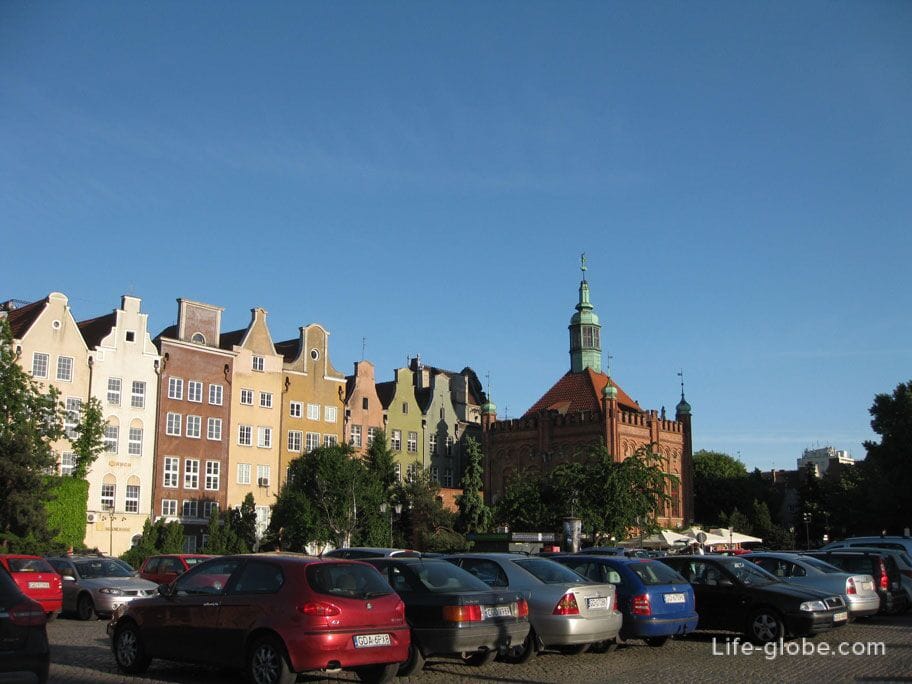
The square has been planted with ornamental shrubs and placed benches for rest. And the center is decorated with the monument of the Millennium - Pomnik Milenijny "Drzewo ze stali". This monument is a metal tree of goals. Built to celebrate the Millennium of Gdansk in 1997 and symbolizes the solidarity and friendship of people from different countries of the world. This tree all the time "growing", from time to time to him, attach with additional metal bars, decorated with carved metal birds and symbols.
Around the tree is always a lot of tourists eager to be photographed.
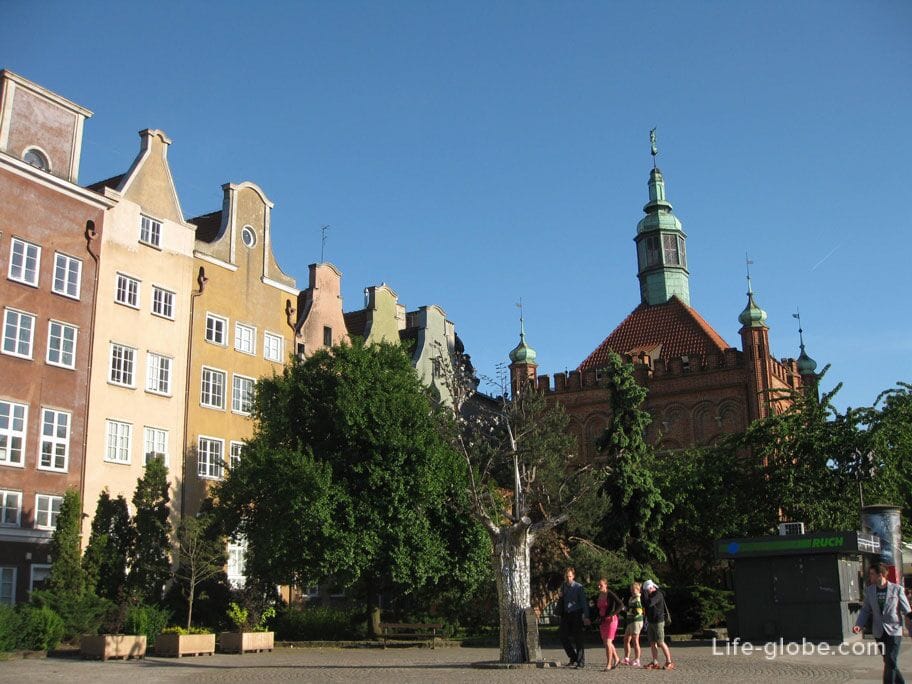
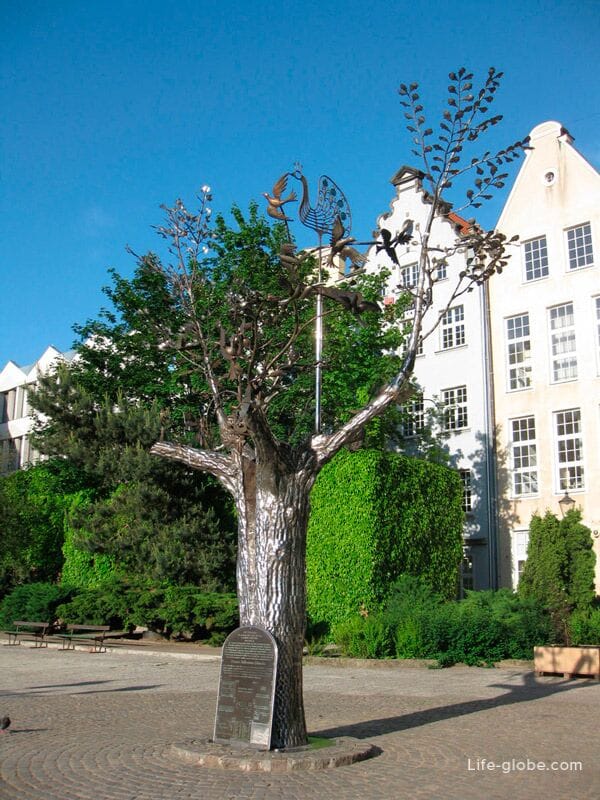
Here, near the monument, located Tower of Slamina - Baszta Słomiana, that is a straw tower. This octagonal tower, made of red brick, was built in the second half of the fourteenth century and was used for additional protection of the Western ramparts of the medieval Gdansk. Called the tower of straw in honor of the original building, it once had a thatched roof which was later replaced by tiles.
In later years, the tower also served as the Powder tower. 1945 were destroyed the roof and upper walls. Fully restored tower was only in the 1950's.
Currently, the tower is one of the premises of the Academy of arts.

To the right of the tower stands the monument of architecture and history which is located inside the Amber Museum or the craft Museum in gdańsk - Muzeum Bursztynu. Once it was the prison tower and the torture house.
The Museum was founded in 2000 in the former prison tower, and opened on 28 June 2006. Is a branch of the Historical Museum of the city of Gdansk.
In the Museum you can see amber and meet the practical application of this natural stone in different aspects of human life. You can learn about the history of amber, amber crafts, trade routes, use of amber in medicine and as magical stone and as material for research and artistic expression.

Opposite the amber Museum is something for which the tourists from all over Europe flock to Gdansk - Golden gate, the main entrance to the old town. It is for these famous gate originate the narrow cobbled streets and colourful historic buildings of the old centre of Gdansk.
To the Golden gate adjoins the monument of architecture and art of St. George, the brotherhood of St George - Dwor Bractwa sw. Jerzego.
Building the brotherhood of the red brick Gothic architectural style, was built in 1494. The first owner of the building was a Brotherhood of St. George. The basement housed a shooting range for archers, and storage equipment used for archery. On the first floor in the big hall of the brotherhood celebrated important events and banquets, were held theatrical performances. In 1566 the peak of the dome crowning the building was decorated with a statue of St. George slaying the dragon. After the dissolution of the brotherhood in 1798 the building became the property of the city.
In 1945 the building was partially destroyed, the roof completely destroyed and the interior was burned. Restored again in 1953. Currently the building houses the hull school of art.
The photo on the left of the red brick building of St. George, to the right is the Golden gate
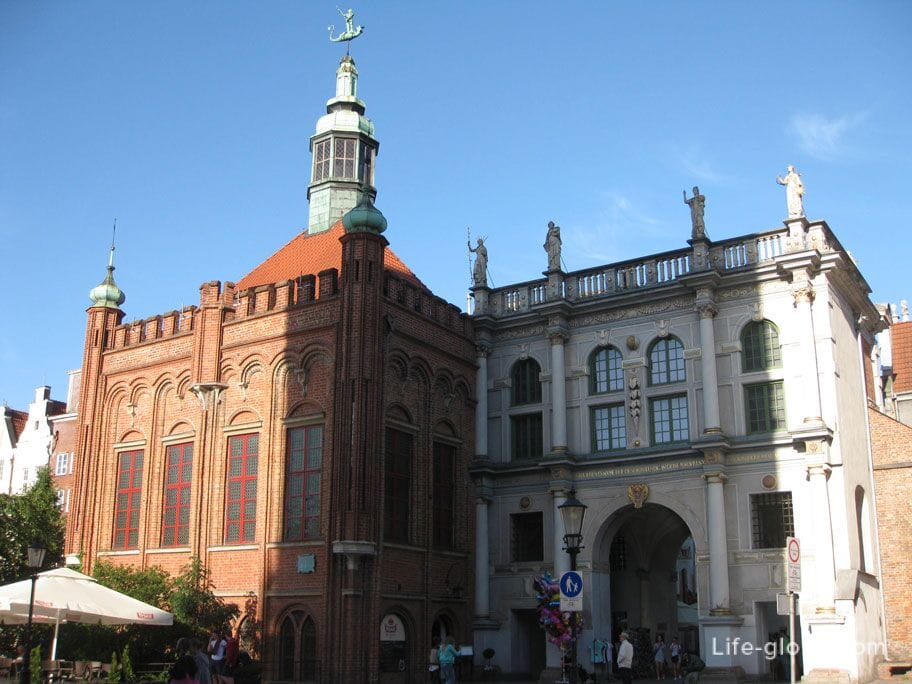
Themselves the Golden gate - Złota Brama was built in the years 1612-1614 according to the project of Abraham van der Block and is made in Renaissance style. Stone sculptures and Attica on the gate symbolise the allegorical image of the civil virtues, Reason, Justice, Piety and harmony.
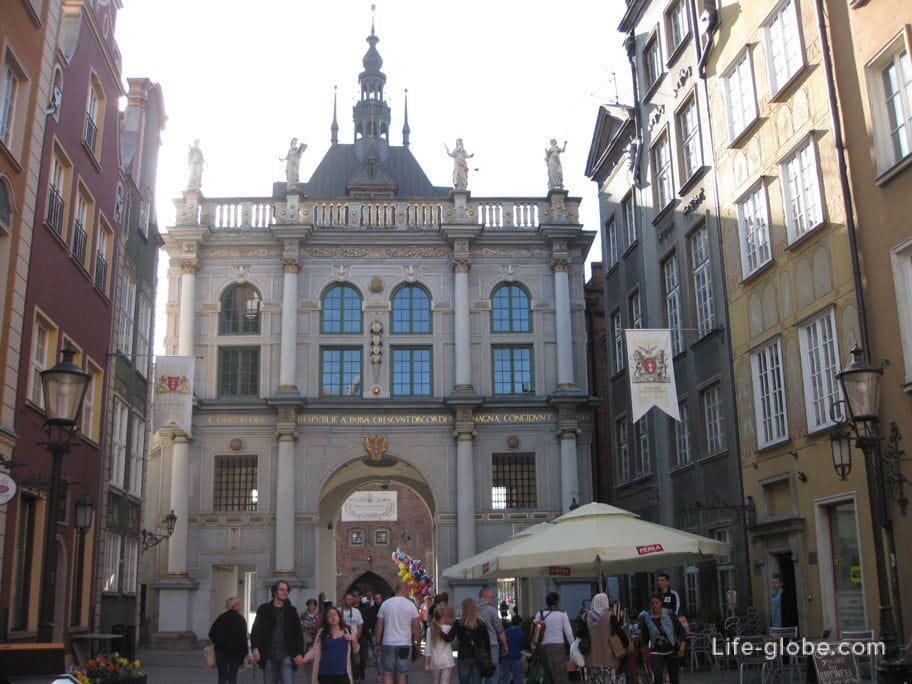
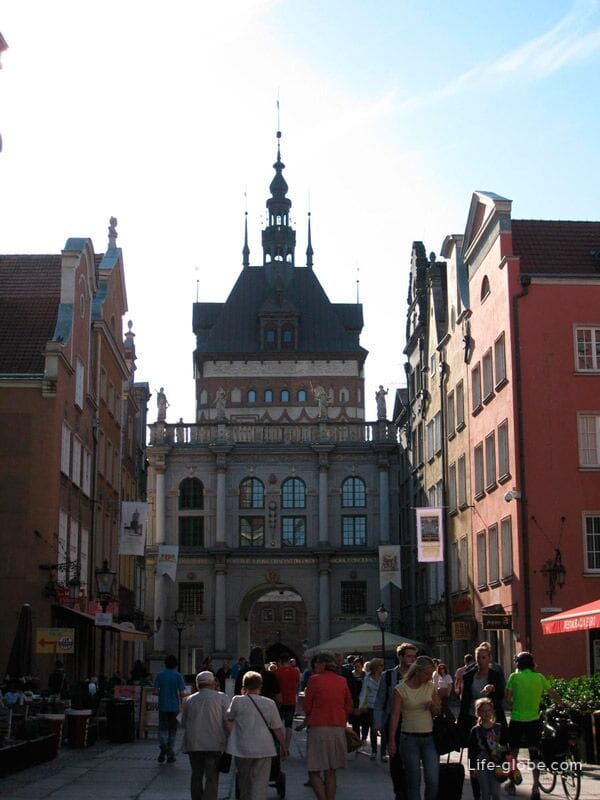
The Golden gate originates one of the most famous streets of the old town, Dlouha street - Dluga. This street is quite wide, for the streets of the old town of course, paved with cobblestones. On both sides of the drawn multi-colored gingerbread houses. Along the sidewalks are a large number of cafés, pubs and restaurants, as they say on any taste and color.
This street, together with Dlugi Targ, which means long market forming the Royal route (the Royal route) and are considered the most beautiful streets of Gdansk. The kingsroad as a magnet for hundreds of tourists at any time of the year.
On this street are located the main buildings and museums of the old town of Gdansk.
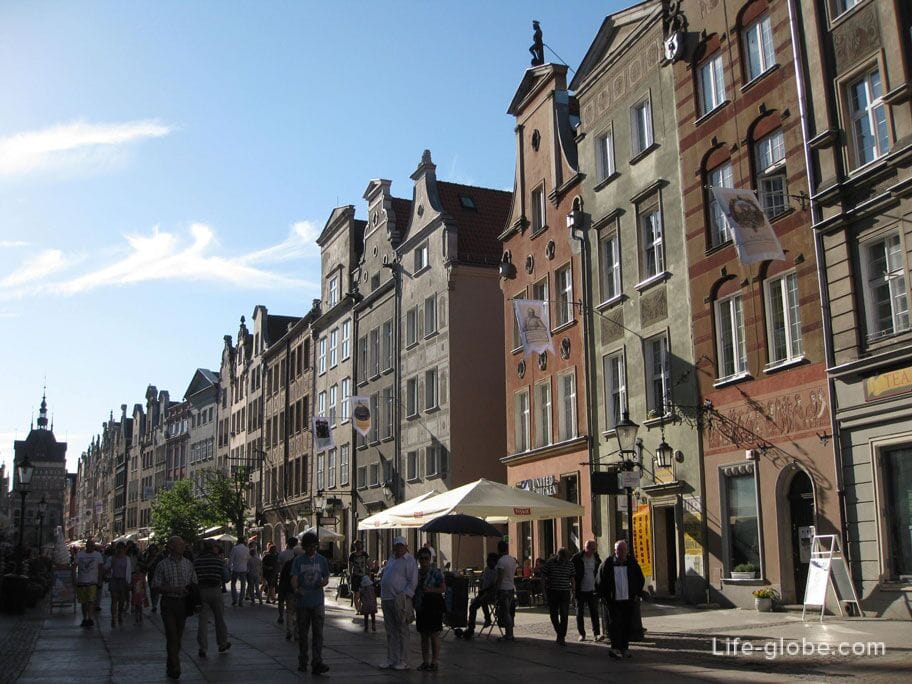
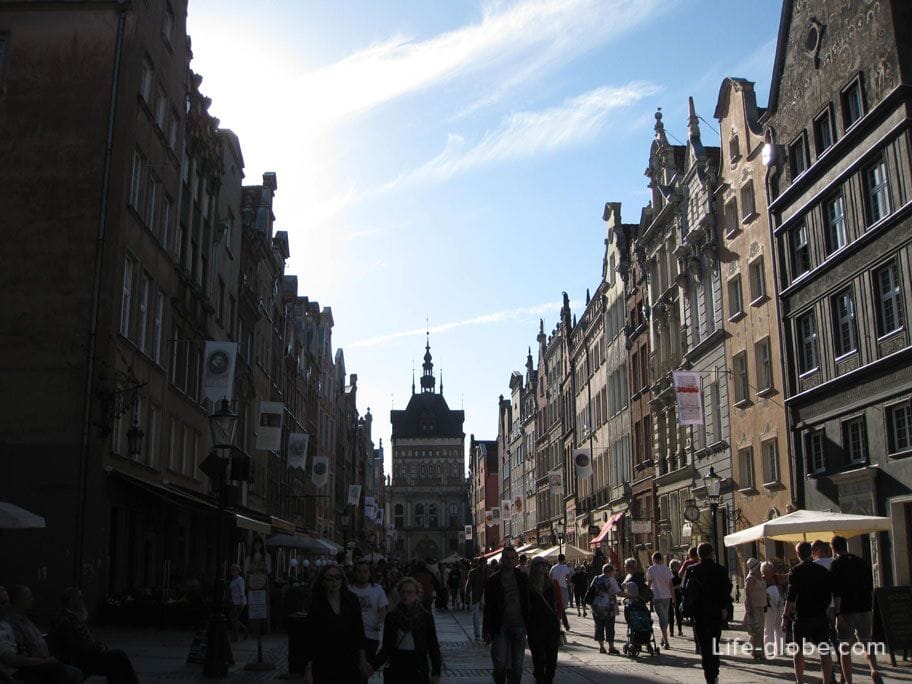
Walking along długa street getting to the main sights of the city of gdańsk - Main (Central) city Hall (Ratusz Miasta Gdanska Głownego). The town hall building made of red brick, in the Gothic style of the Renaissance. Top of the town hall topped by a spire and the upper part of the tower is decorated the city for hours. Above the entrance to the hall is the famous bas-relief of lions protecting the city's coat of arms, one of which has an inverted head toward the Golden gate.
This building once served as the main building of the city, which housed the court of justice and seat of the municipality. It dominates the old town and as it dominates the panorama of the Royal route.
During the War, world war, gdańsk was repeatedly bombed by allied planes, resulting in a fire destroyed the spire and ceilings of the town hall, and the walls were pretty spoiled by bullets and bombs. However, before the outbreak of hostilities, a valuable relic from the interior managed to evacuate, furniture and paintings were hidden in villages.
Since 2000, the town hall is Gdansk historical Museum.

Behind the town hall is the Central, main and the biggest square of the old town, the so - called long market, Dlugi Targ.
Around the square is the beautiful colored buildings with patterns of stucco and carved decorations. Near the houses on the square cafés and restaurants. Generally a large concentration of cafés, pubs and restaurants, it's normal for any old town in Europe. Because it is here that attracts many tourists. And as you know where the tourist is, there is money, where is money there is food service establishments, and entertainment. In addition to the cafes and restaurants on the square to show off their skills free artists and street performers.
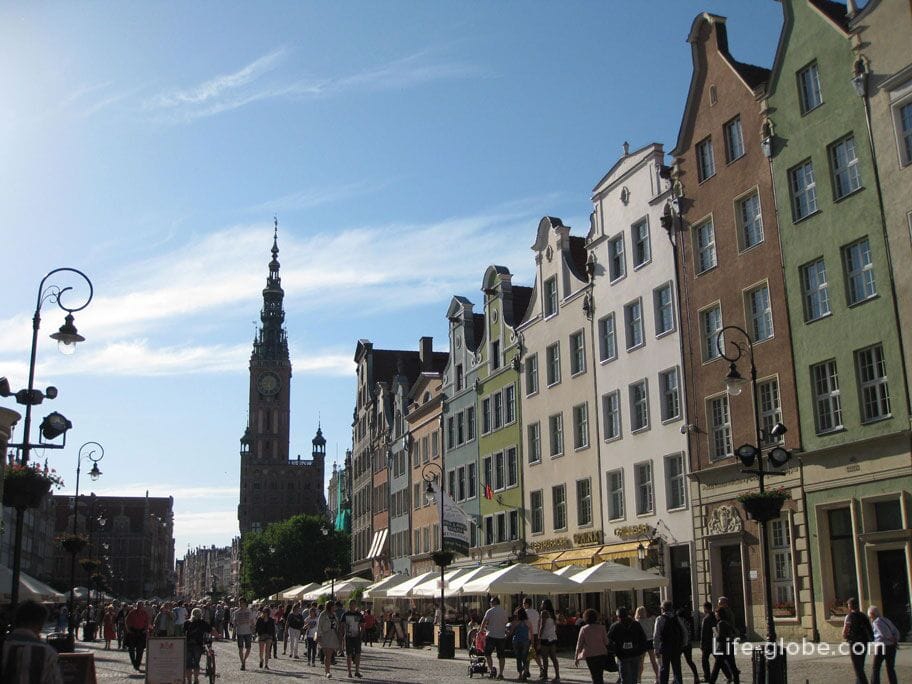



On the right side of the square-equipped concert venue.
In the center of the square is decorated with the famous fountain of Gdansk - Neptune's fountain (Fontanna Neptuna). The fountain is in the spirit of the nautical theme. Another would be the main fountain of the city was devoted to the sea theme, because the city of Gdansk is a rather large port on the Baltic sea and the centre of the petrochemical and engineering industries.
All the sculptures of the fountain represent any sea creatures, fictional or real. On the second tier of the fountain there is a sculpture of the famous fairy-tale creatures sea Neptune or Triton, holding in the river his Trident. Originally a statue of Triton was naked with a strong male phallus. However, in April 1988 on the occasion of the annual maintenance, at the behest of the municipal authorities of gdańsk, naked manhood was covered by a Fig leaf.
According to legend, for a good and happy life, everyone who comes to the city for the first time, to kiss the statue behind lower back))
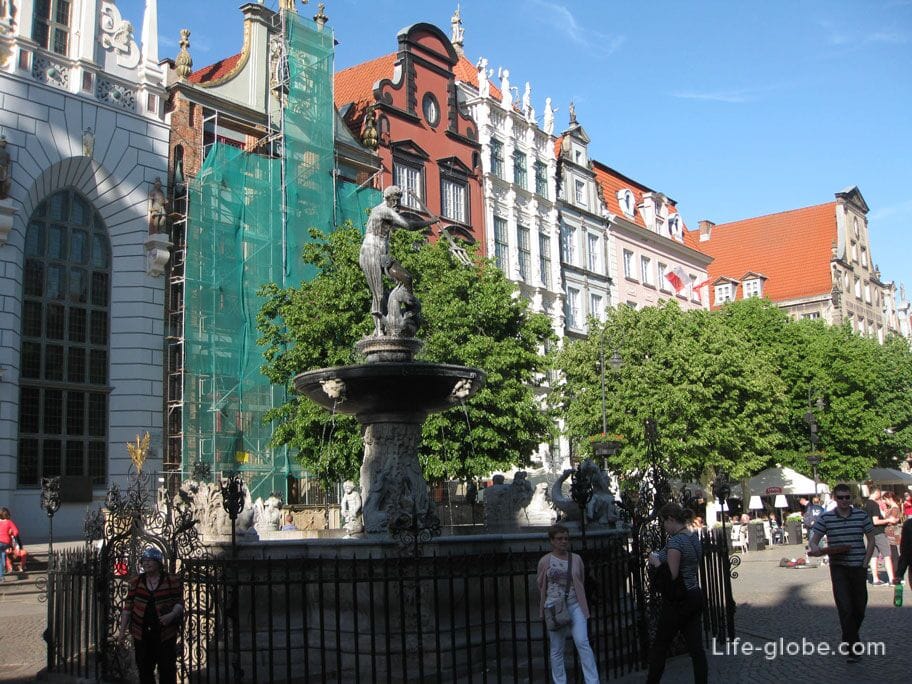
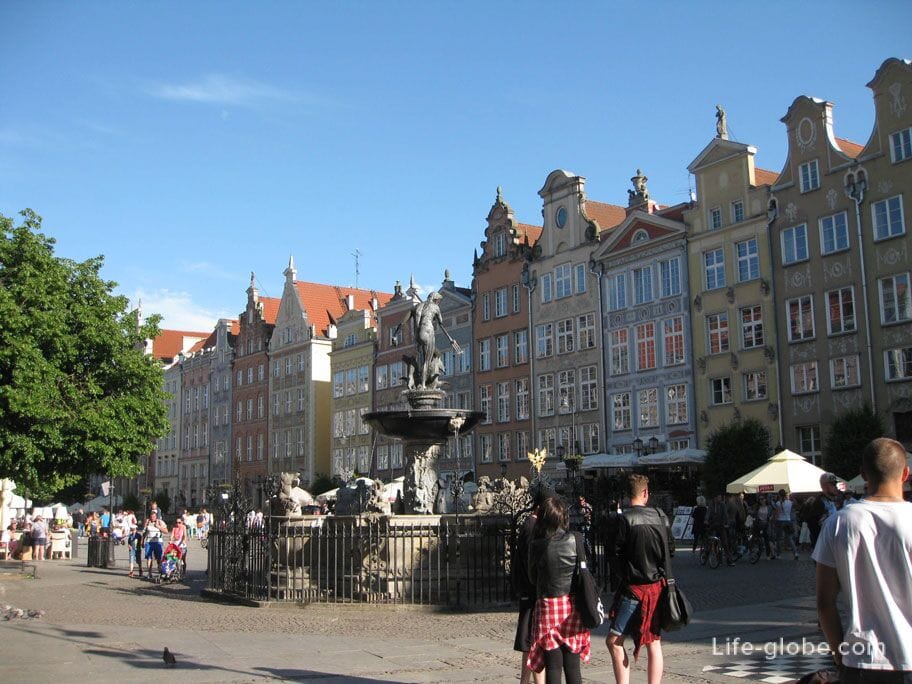
Just behind the square are the Main water gate of the city, so called the Green gate - Oddział Zielona Brama. Gate before Kogi. This is perhaps the oldest water gates of gdańsk, first mentioned in 1357.
Gate chetyrekhyadernye arranged like in the building, then there is a passage through the capital structure. Was built by the Dutch. The gate building currently houses a branch of the National Museum and the Gdansk gallery of photography - Muzeum Narodowe. There are various exhibitions, meetings, conferences and shows. In one of the rooms of Green gate was equipped with one of the offices of the Polish President Lech Walesa. Later, the office was transferred to the European Solidarity centre.
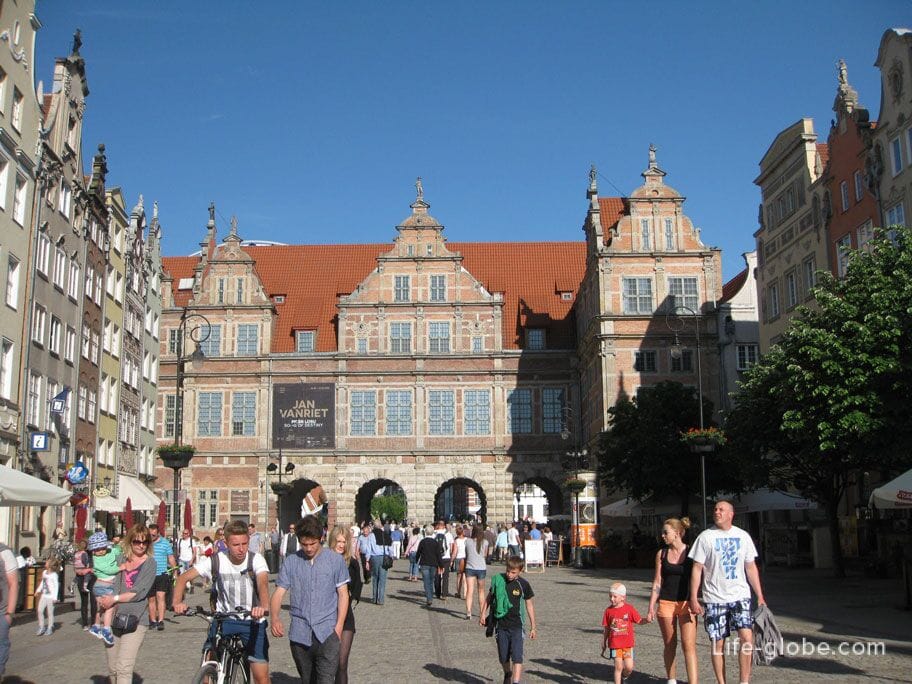
Passing through the gate, you find yourself on the old bridge across the channel of the river motława (Motlawa).
Bridge and Green gate from the river

Under the bridge parked a colorful water taxi))
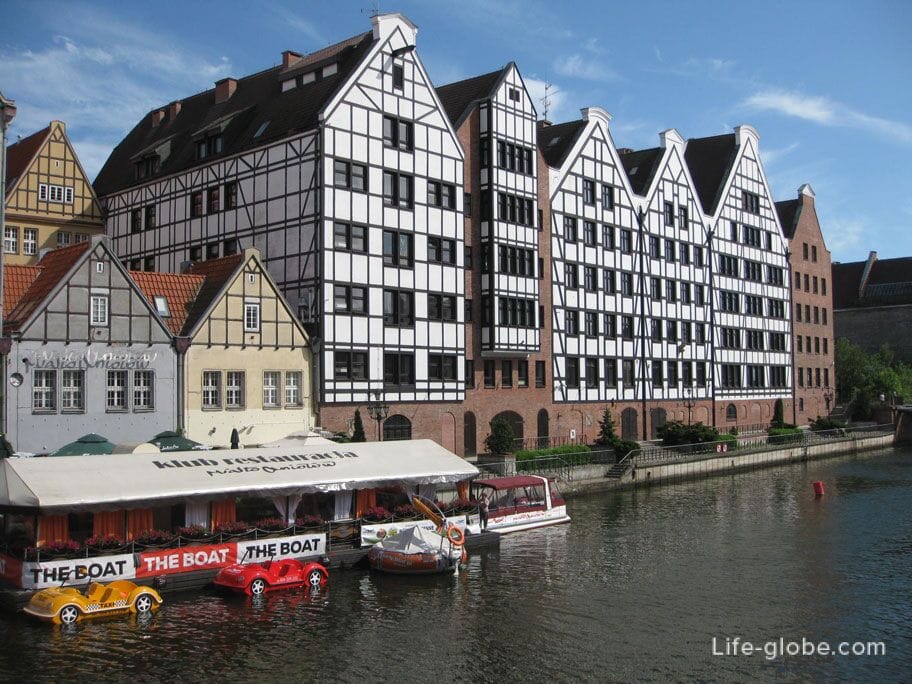
Here begins the promenade of the old town. The waterfront is just as beautiful and comfortable as the old city, if not even more beautiful. He would like more.

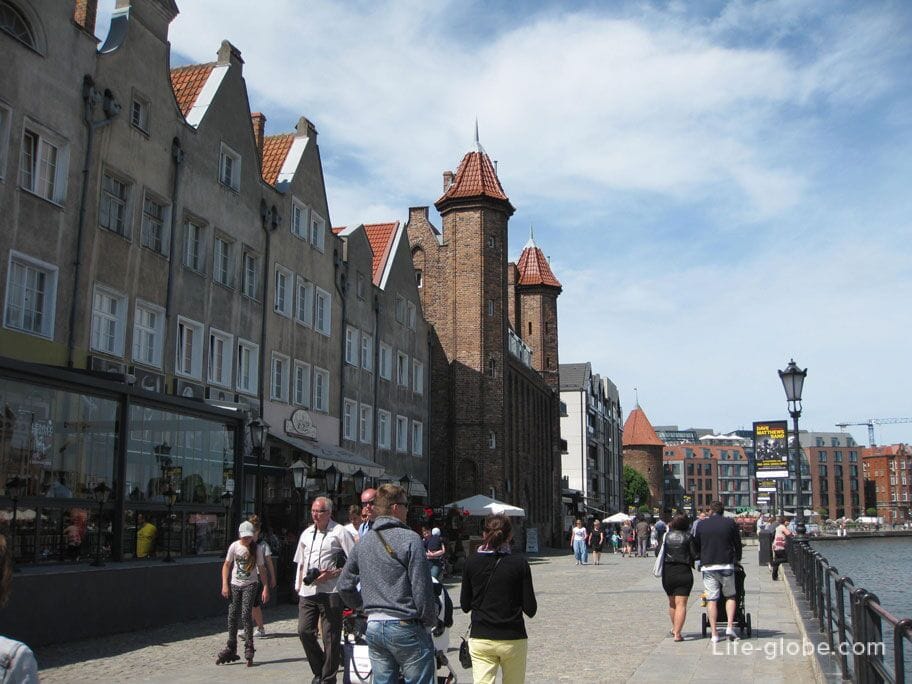
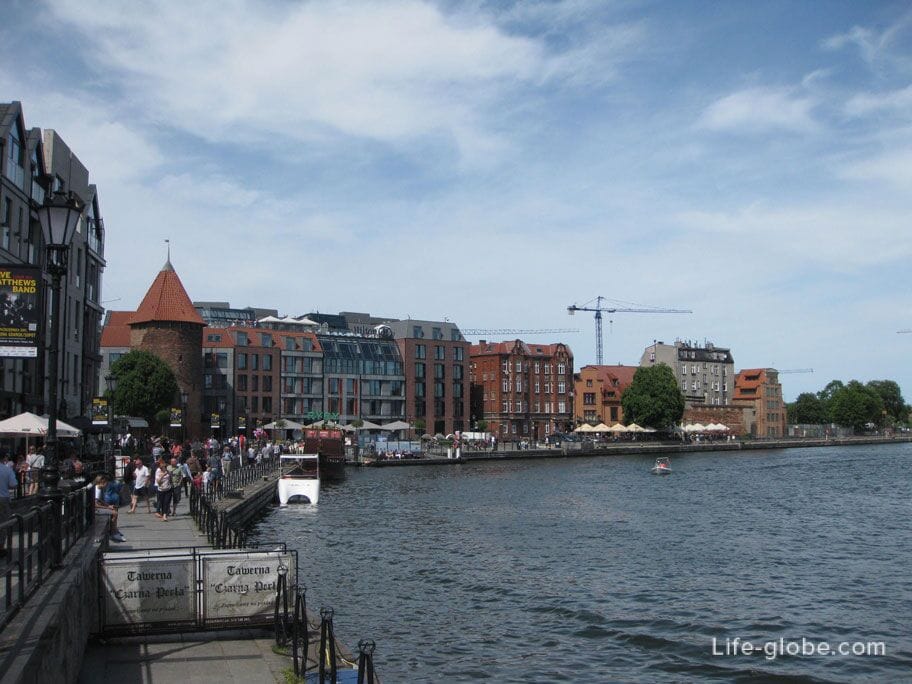
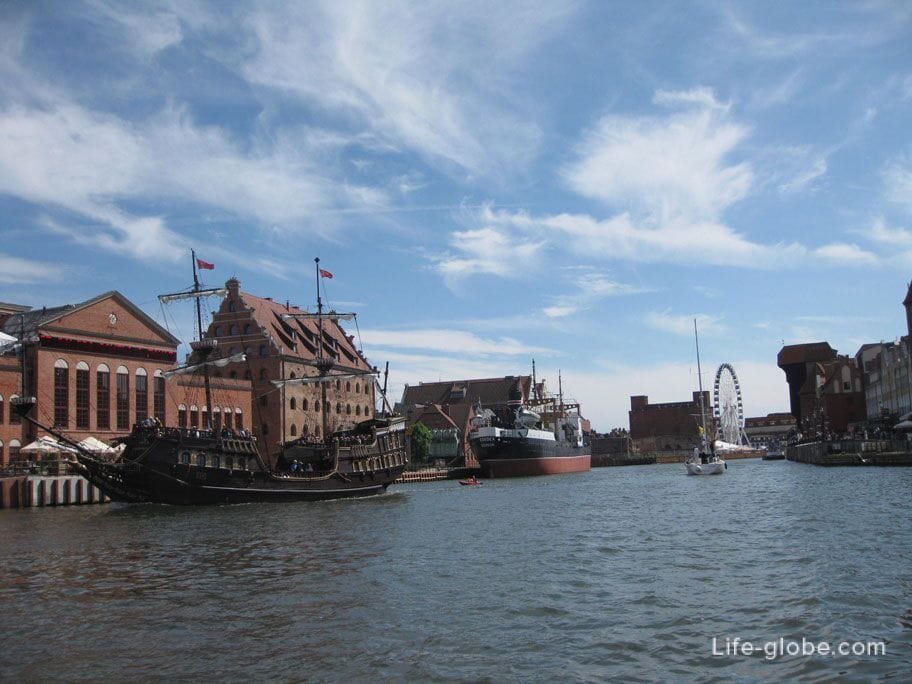
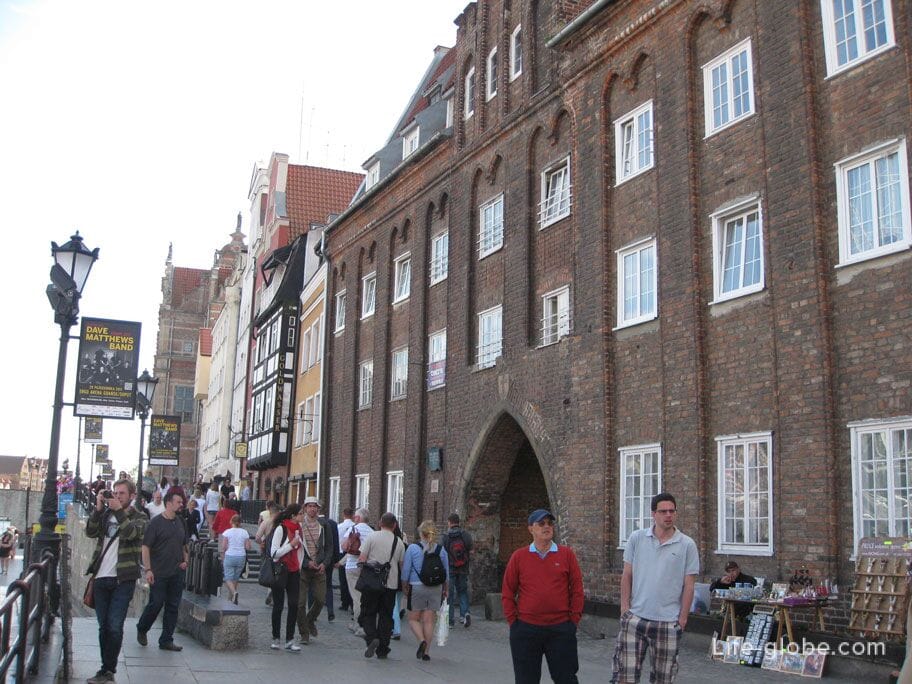

Along the waterfront stretch of colorful old houses, cafes, restaurants and souvenir shops. Installed benches for rest. After a walk through the old town, so nice to sit down to rest on a bench, admire the views of the river and the snow-white catamarans plying on it.
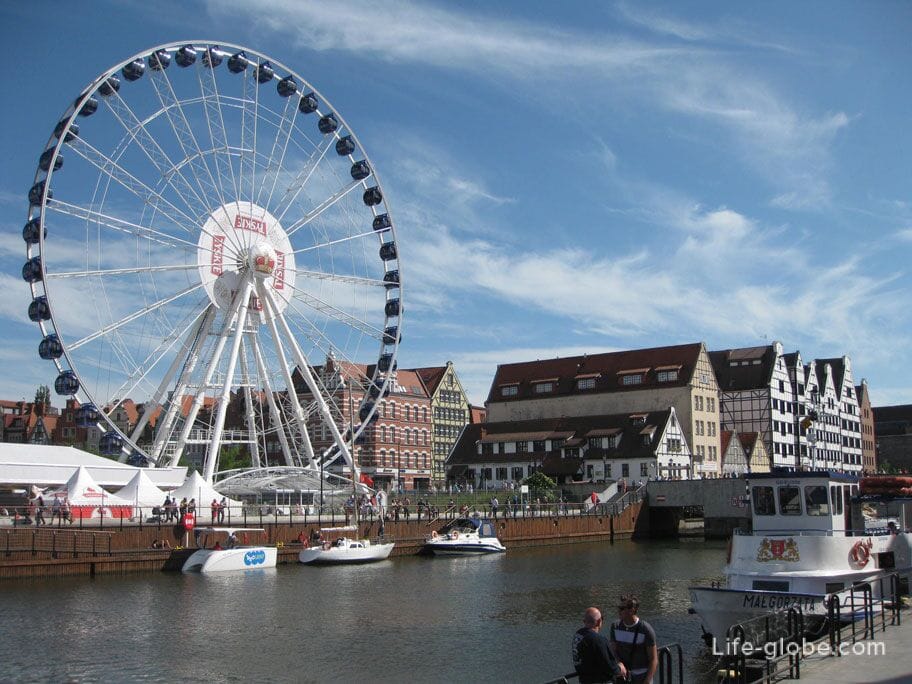
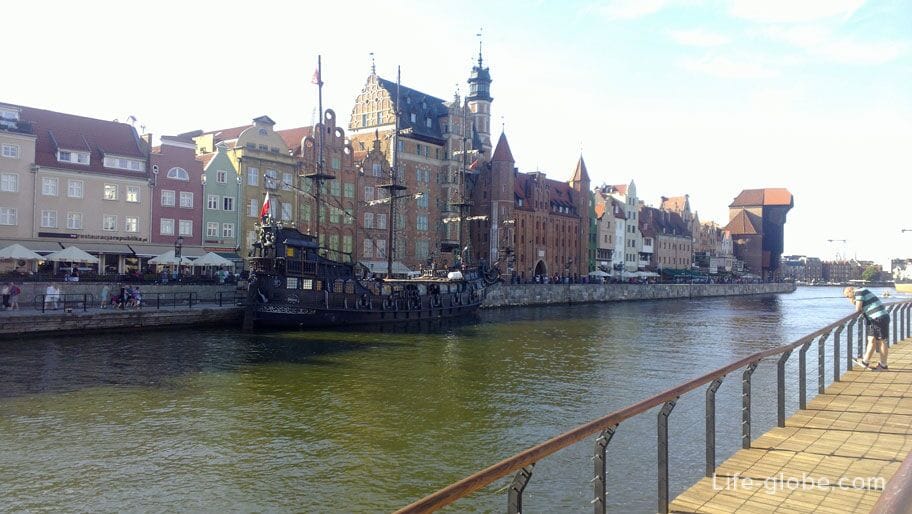
The balconies of many houses decorated with fresh flowers and decor. Very nice.
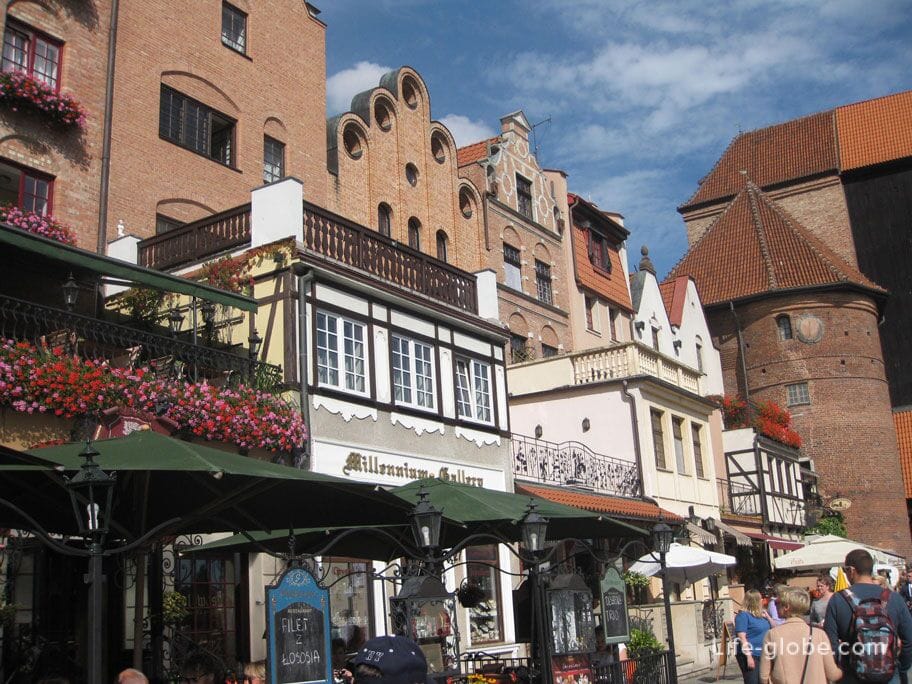
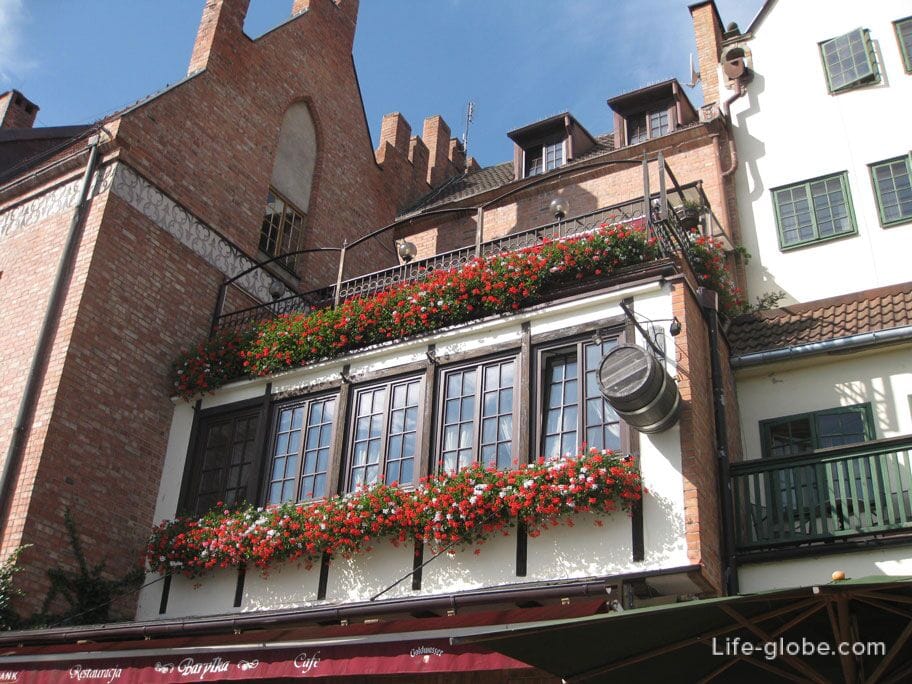

On the waterfront there is a large number of monuments, museums and attractions.
The main attraction of the promenade is probably the crane over the Motlawa river (popular great crane over Motlawa river) - Zuraw. The popular great crane is considered to be the oldest port crane in Europe and a symbol of the Maritime history of gdańsk. See Zhuravel annually receives hundreds of tourists from all over the world. And for us, he made an impression, not a beauty, but primarily for its unusual and so eye-catching of all the surrounding buildings architecture.
This structure is simultaneously performed functions of a port crane and city gate. Inside the Letter was a huge wooden wheel that was set in motion by human muscle.
Currently, the museum - Oddział Narodowego Muzeum Morskiego is located in the Zhurava building, you can go and look at the crane mechanism.
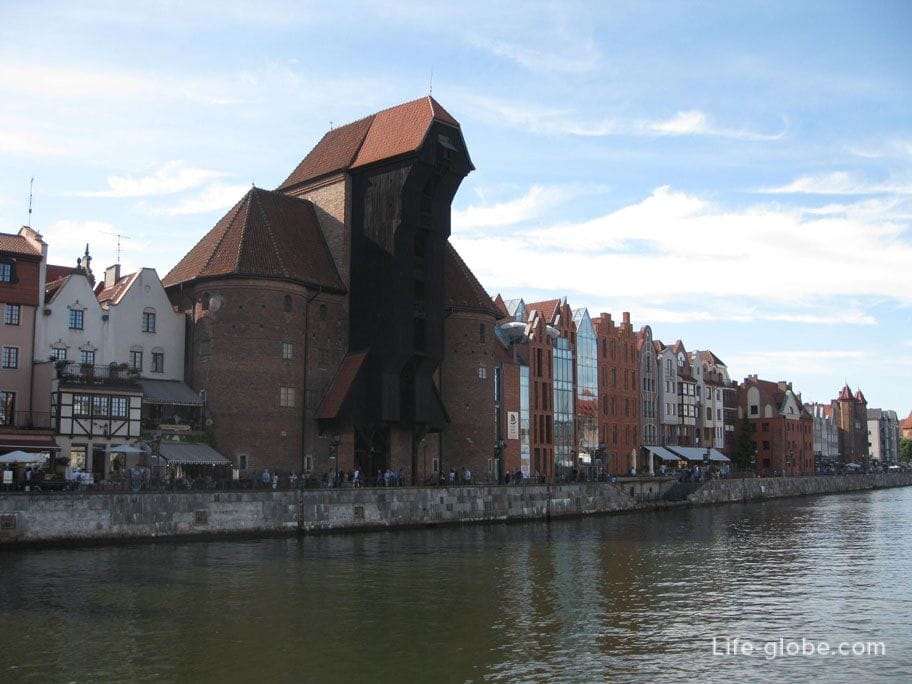
In the building of Zhuravel from the old town also has a water gate, an arched passageway.
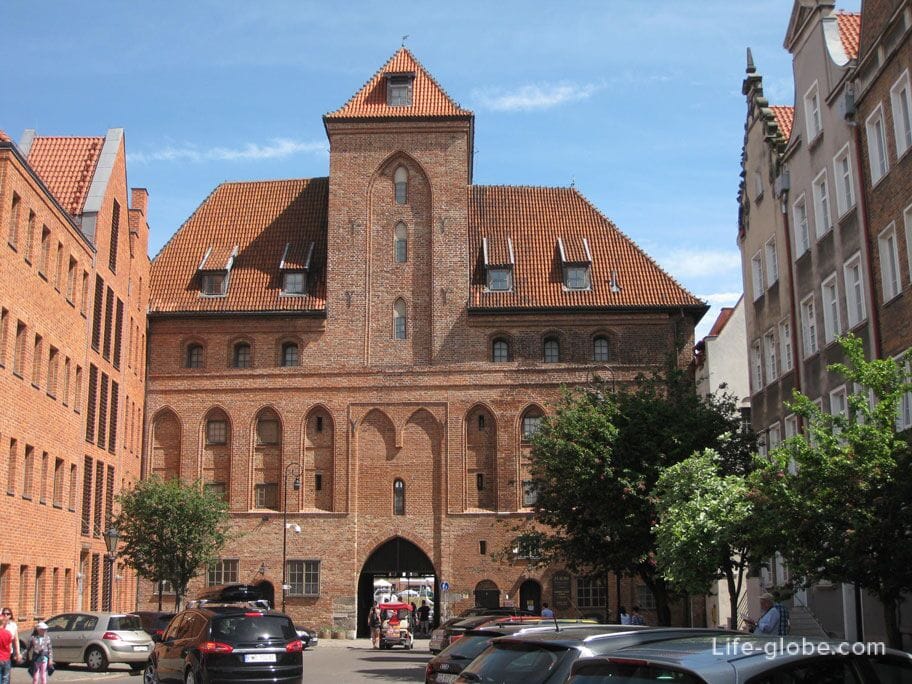
From the old town to this part of the waterfront can be accessed from different streets, passing through the water gate. It's such as gates,
- gate, Brama Chlebnicka. The gate of the fifteenth century, are among some of the oldest of all surviving. Of late Gothic architecture. The passage through the gate is made in the form of an acute arch. Of all water gates, gate Chlebnicka best survived the Second world war, burned only a small part of the walls, roof and interior. Currently the gates are the same as on the old pre-war photographs.
- gate of St Mary's - Brama Mariacka. The gate has the architecture of the late Gothic. Exact date of construction of the gate is unknown, but most likely the gate was built in the last quarter of the fifteenth century, as first mentioned in 1484. Currently, in the building of the gate is the archaeological Museum and the science Museum.
- gate, Brama Świętojańska. Another historic water gate. Unlike the others they are almost entirely a modern reconstruction.
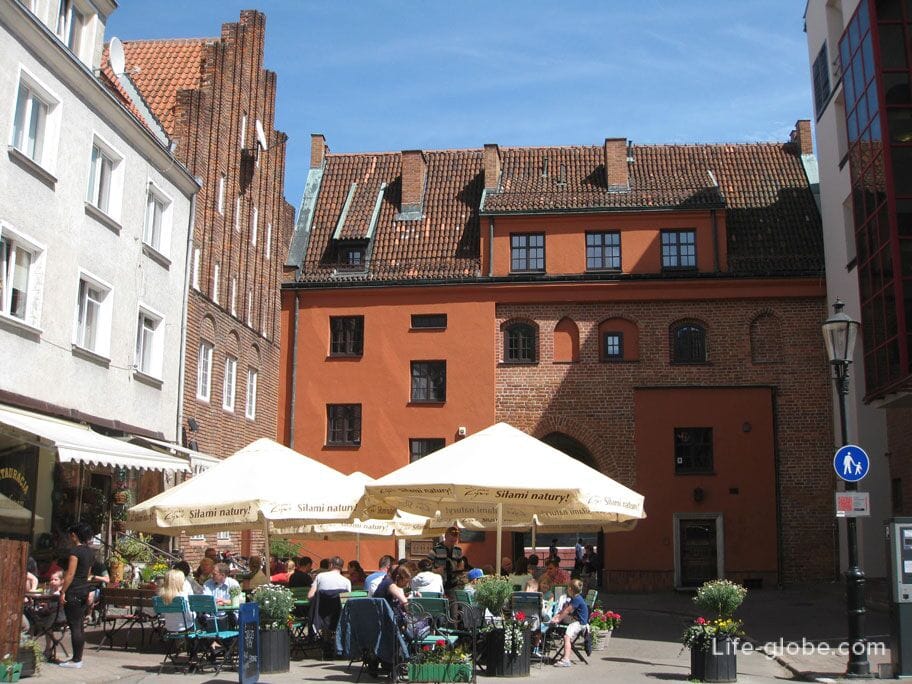
River channel runs water buses. Here are stopping jetty.
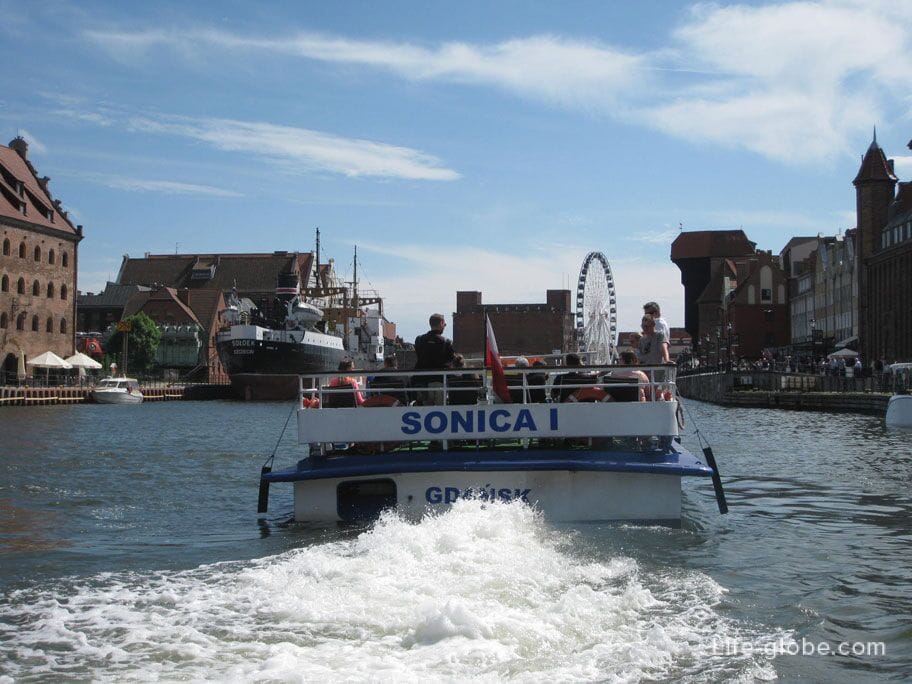
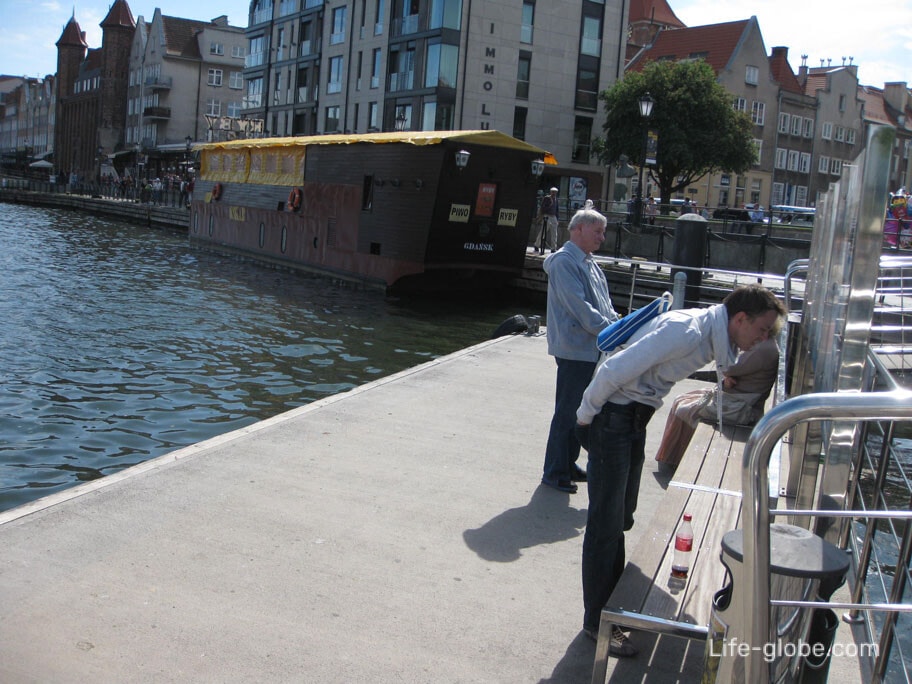
The channels of the river divides the land, which is a small plot of land. This plot of land called the island of warehouses. There are sea warehouses and parked cargo ships.
Crossing the island of warehouses, go to another channel of the river, on whose Bank there is a monument of history and architecture Stagiewna Gates, full Polish name of Brama Stagiewna or Stagwie Mleczne. Gate is a defensive tower built in the early sixteenth century, the remaining fortifications of the old town.

If you walk on this side of the embankment a little further, you will see another monument of architecture and history of the Royal granary - Spichlerz Krolewski. The barn is made of red brick with arched Windows and a tile roof.
The photo barn on the right. Left the hotel with the restaurant on the ground floor

In this part of the seafront, the yacht Marina - Marina Gdansk and houses designed in a modern style.
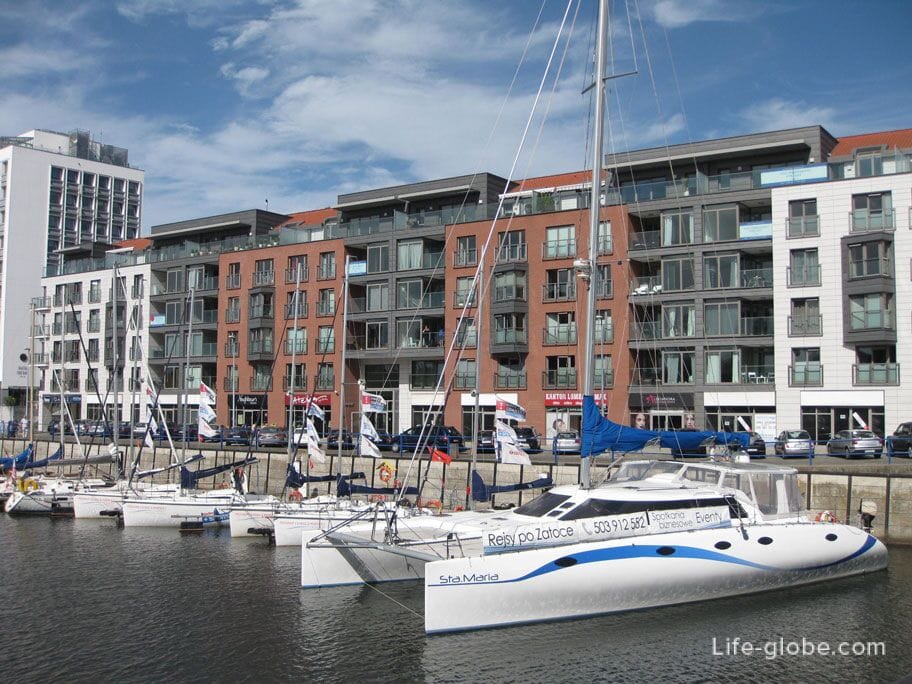
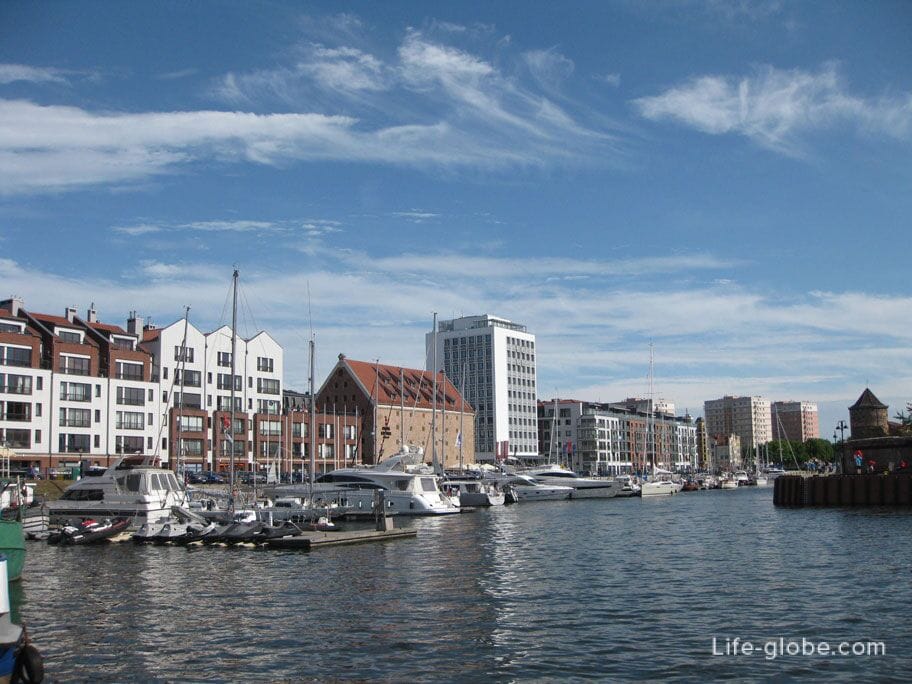
Here people ride on the kayaks. Riding a large number of people, from adults to the youngest children. If you go to the channel then, you go to not the busy part, inhabited by swans. At this historic part of the town ends, starts, residential areas. We have nothing to do and we walked along the promenade back to the center of gdańsk's old town.

Parallel to the main street Dluga, is another large and busy street of the old town Piwna. This paved with cobblestones and walking is one of the most lively streets of the historic center. Street Piven runs the entire length of the old town.
Along the same street drag colorful gingerbread houses on the first floor which housed cafes, bars and restaurants.

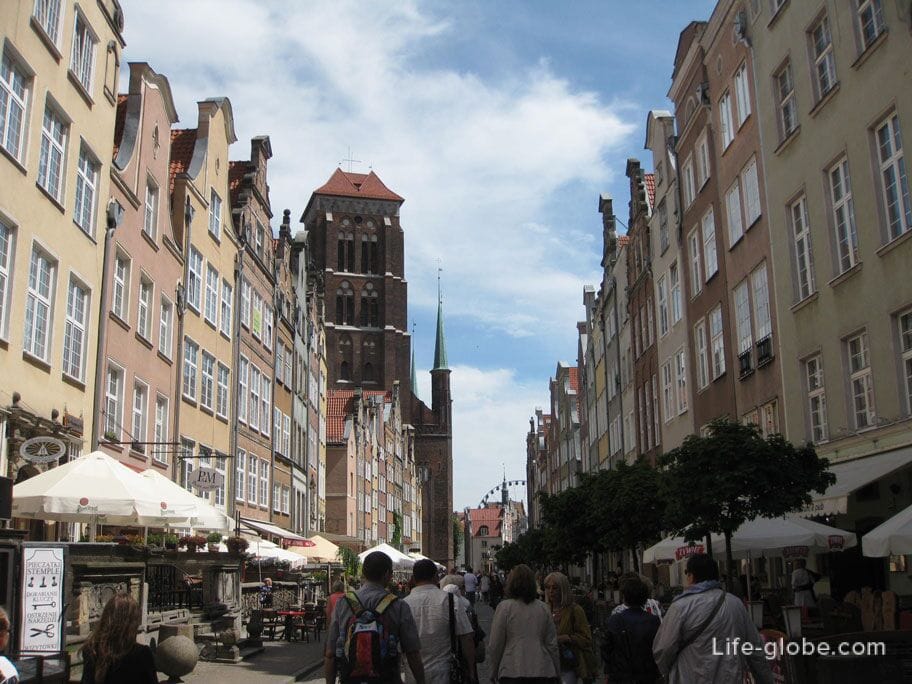
The main attraction is the Beer of St Mary's Church - Bazylika Wniebowzięcia konkatedralna Najswiętszej Marii Panny w Gdansku, abbreviated Polish name Bazylika Mariacka. The Church is also called St. Mary's Church or Basilica of the assumption of the blessed virgin Mary.
It's better to call this temple is not a Church, but a Church. The residents of gdańsk believe this to Church the largest brick Church in the world.
The Church was erected in the thirteenth to sixteenth centuries. The architecture is pure and simple Gothic style. Until 1945 it was the largest Lutheran Church in the world. In 1945, during the battle for gdańsk, the building had suffered significant damage, resulting in a collapsed part of the roof. In 1955, the Church was reconsecrated and once again became a Catholic Church, and in 1965, the bull of the Pope, the Church became a Basilica.
This high Church of red brick attracts special attention. First, it is the largest building on the street, which certainly makes it stand out from all other buildings. And secondly, it's much higher standing houses, besides decorated spires. We noticed the Church before came to her.


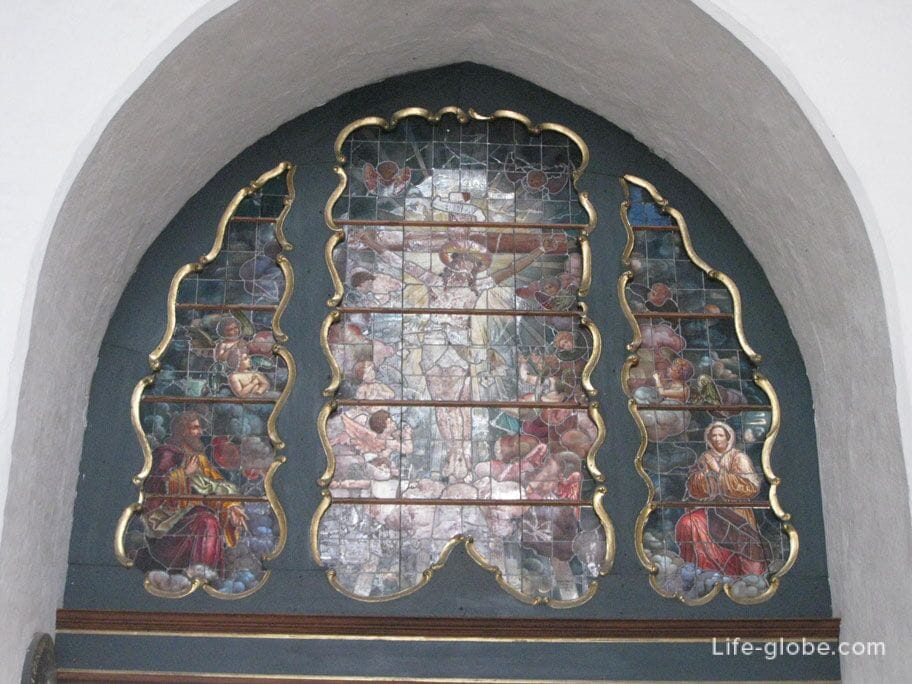
Walking through this beautiful street came out to one of the most beautiful buildings of the old city, currently the building houses the Academy of fine arts Akademia Sztuk Pięknych. In this building the street ends, and again we came to the end of the old town, just on the other side.
Academy of fine arts in Gdansk was founded in 1945 in the Polish resort town of Sopot, near Gdansk. Initially, the Academy was founded as a state Institute of fine arts. Later, the Institute was renamed the State Higher school of fine arts. In 1954 the Institute was renamed the Academy and the Academy moved from Sopot to Gdansk. Since 1996 has the status of the Academy of fine arts.
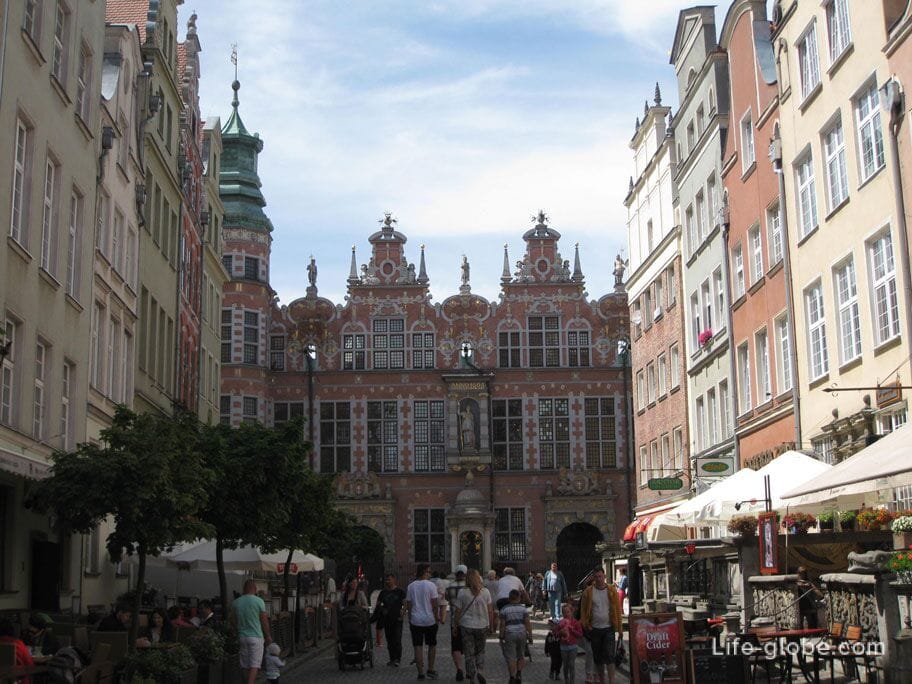
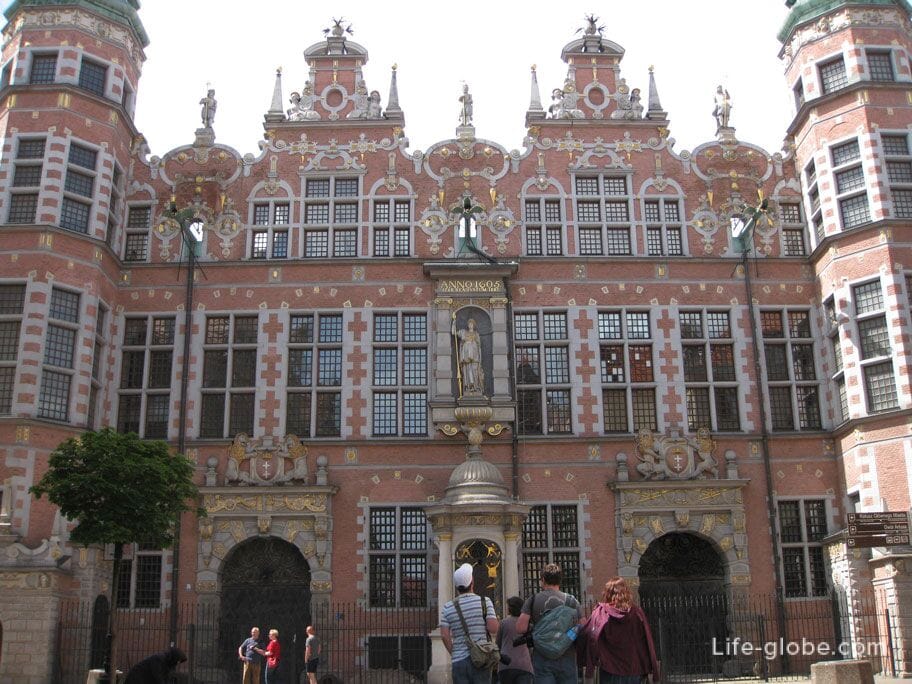
From the Academy turned to the right and continue to move forward. Went to one of the main attractions of Gdansk's old town fortification tower Baszta Jacek. In the middle ages the tower, like the rest of the tower, served to strengthen the main town of gdańsk.
The tower is a brick octagonal building. It has eight floors for firing positions and the basement, which was previously used as a cellar for ammunition storage.
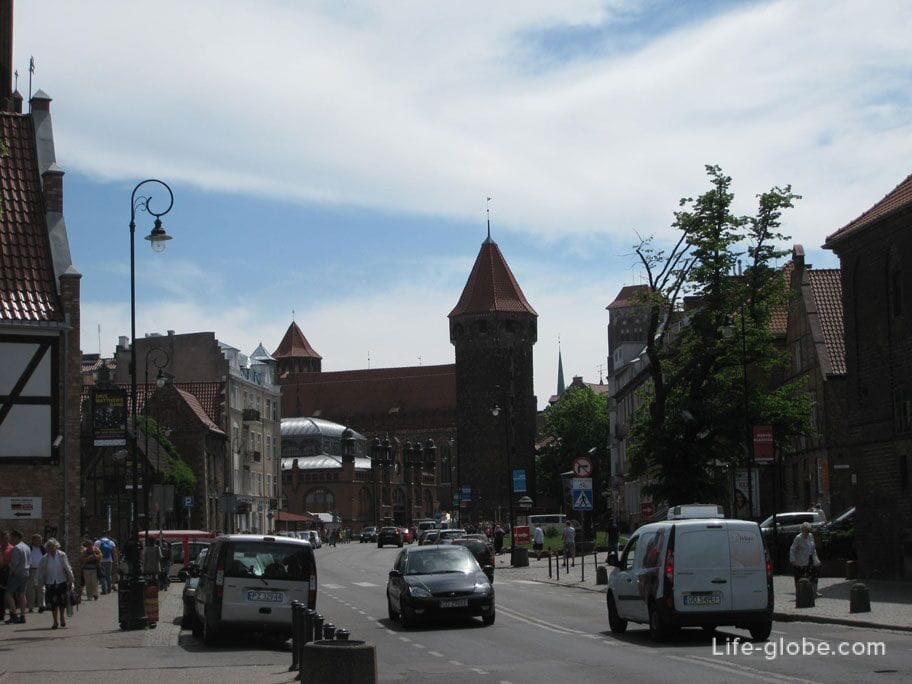
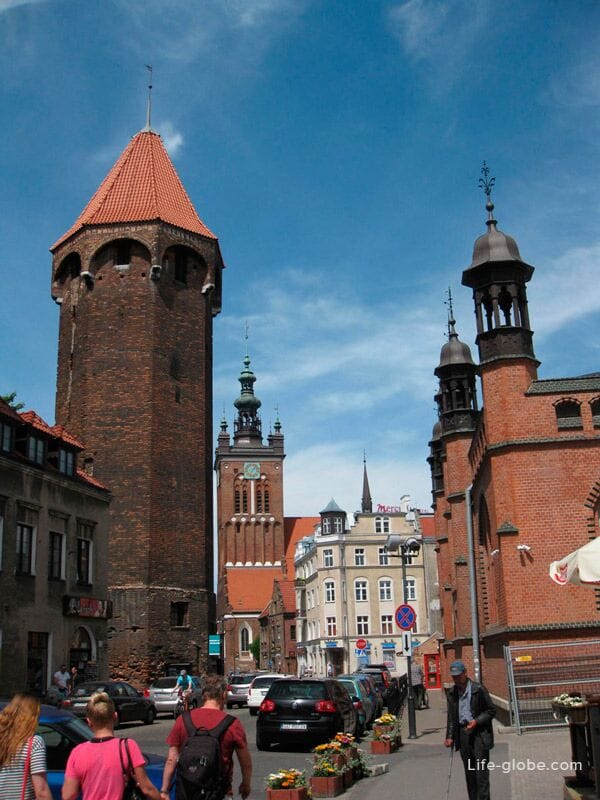
On the contrary Baszta Jacek is a small shopping centre or to speak more correctly covered market Dominican merchants - Hala Targowa Gdańsk. It's the only shopping complex located in the heart of the historic part of gdańsk. The covered market building is a beautiful ancient architecture of red brick. Currently inside the building there are food and industrial markets with a large selection of fresh and quality products.
In the middle ages the market was located in the Dominican area, and people lived. The market was built on the site of St. Nicholas Church in the late nineteenth century. In 1999, during the last restoration of the building, in the course of archaeological excavations discovered the remains of a settlement, a cemetery of over 400 burials and the remains of the foundations of the Dominican monastery.

Next to the indoor market on a small square are open-air pavilions. During our visit most of the shops were closed.

Go ahead and go to the Church of St. Catherine (of Katargina) - Koscioł sw. Katarzyny. Church. Catherine's is the oldest Church in the Old town of Gdansk. The Church is made of red brick in the Baroque style.
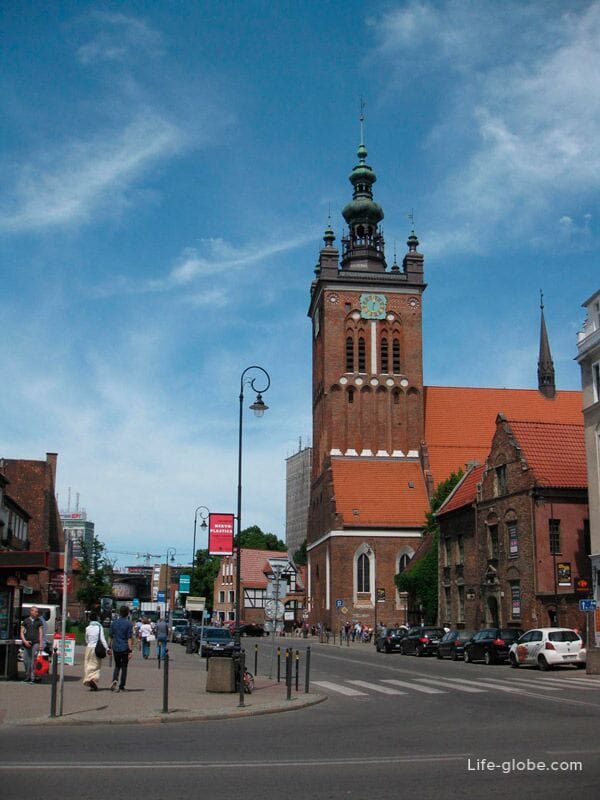


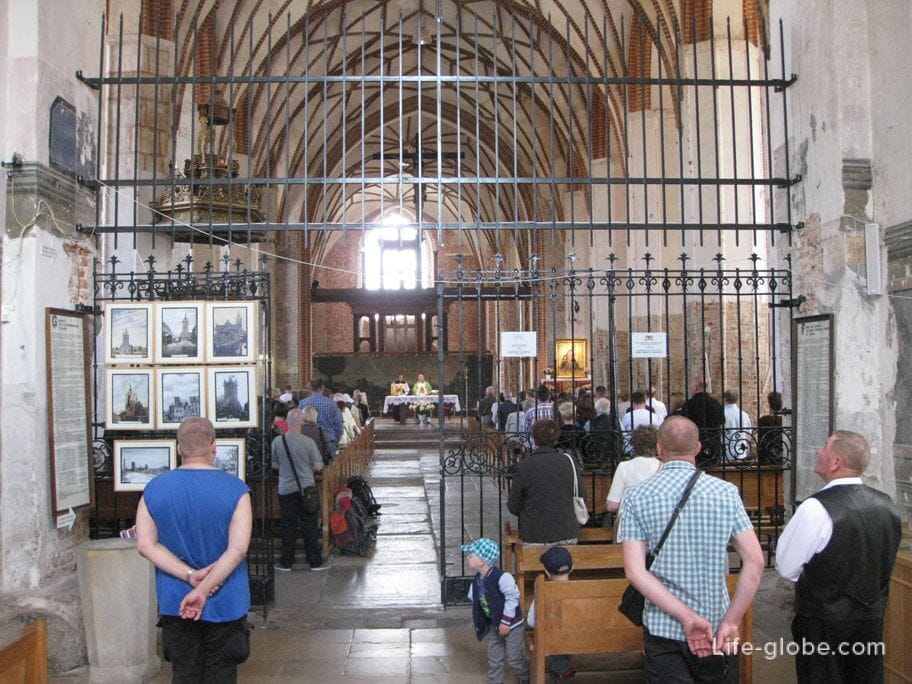
If the Church just a little bit farther right, just a few meters, then go out to a small river, an artificial moat to the Radunia canal (Kanał Raduni), with a historical building a Small mill - Mały Młyn. The mill is a Gothic building of brick with a tiled roof.
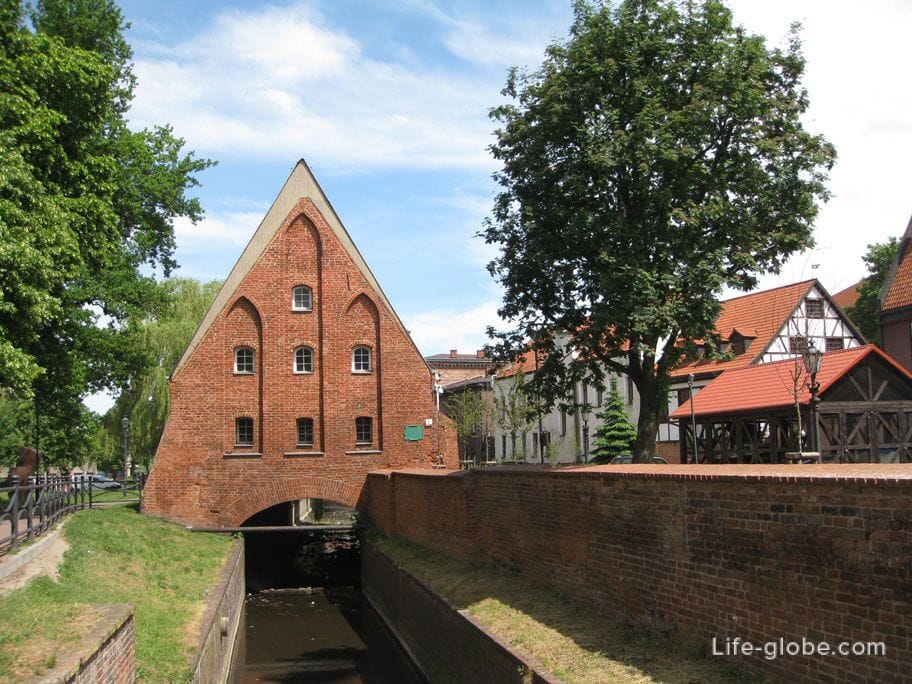
Opposite low mill, directly across the street is a Large mill - Wielki Młyn. A large mill, as well as small, built of brick, has a tiled roof, reaching almost to the ground. Once the mill was set in action by the waters of the Radunia canal.
This mill was erected by the Teutonic knights in 1350. During its history the mill was repeatedly subjected to destruction and fire, then always restored. Used for its intended purpose until the end of the Second world war, and was then partially destroyed and rebuilt again.
Since 1993, the mill building is a shopping center.
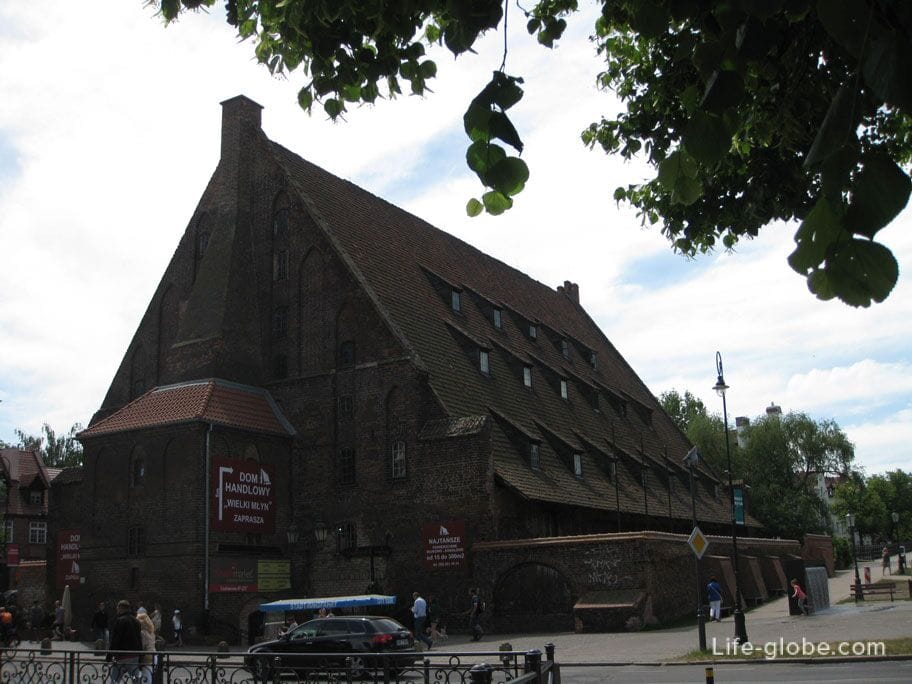
Behind the Church, and windmills, the old town ends and we came out of it going across at one of the Central streets with a large concentration of attractions.
That is probably all the basic and the most important sights of Gdansk's old town which we were interested and about which wanted to tell. But the old town itself does not end there, he did quite extensive and it is possible to walk for quite a long time.
So we did, continuing its path through the small streets and alleyways of the old city.
Around the old town here and there upon the small area. Typically, the installed benches for rest, the carriages with snacks and cafes. On one of these squares we came across a trailer with ice cream. Ice cream is not tasty, as well, and all the food in Gdansk, but the cheerful man the ice cream man in a pink apron and tie is very uplifting.
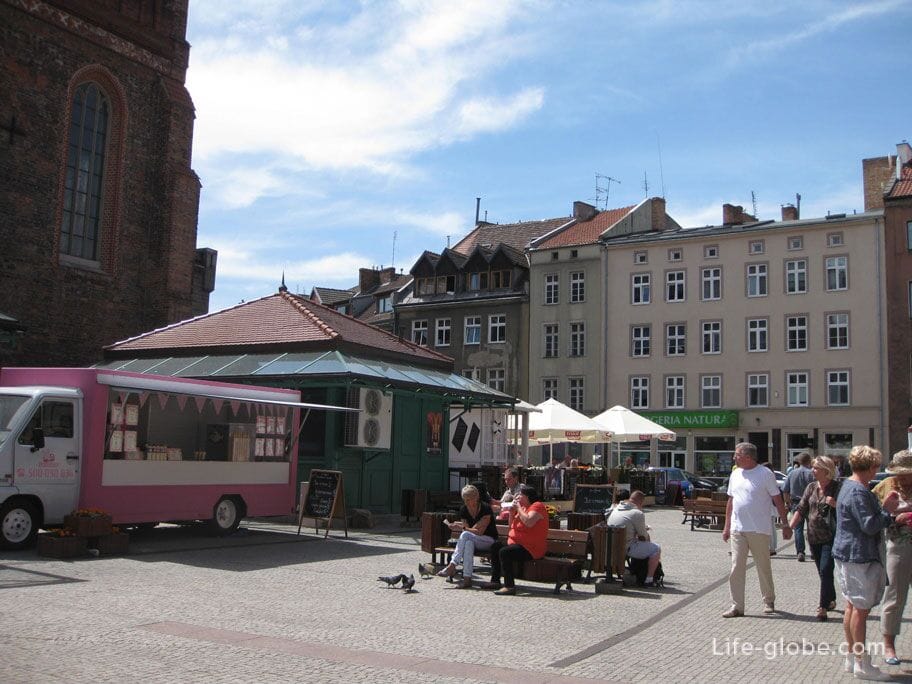
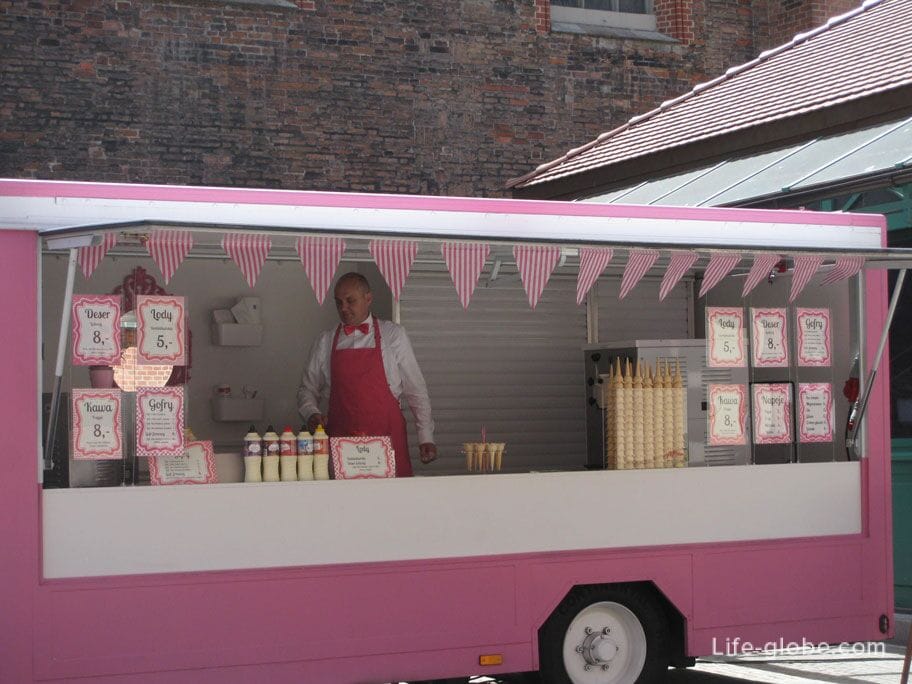
Walking through the narrow streets and alleyways of the old city to gaze brought a small multi-colored houses and buildings of unusual architecture.
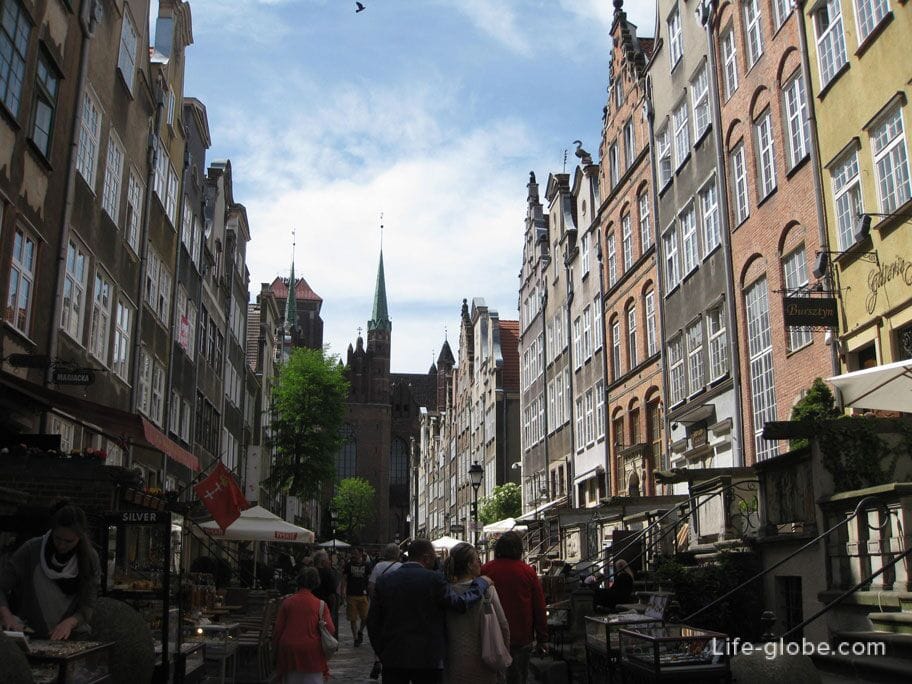
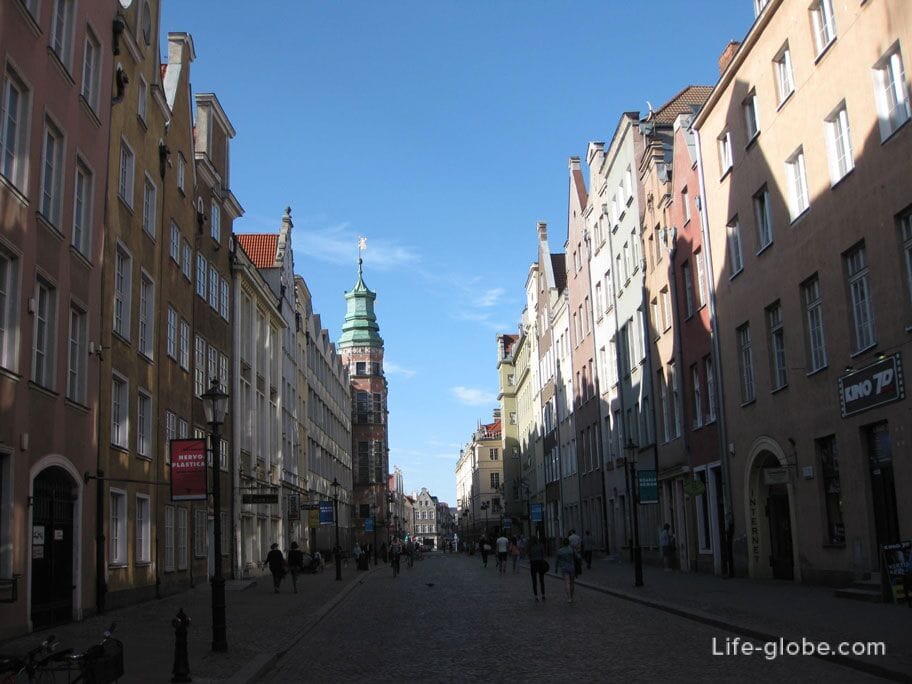
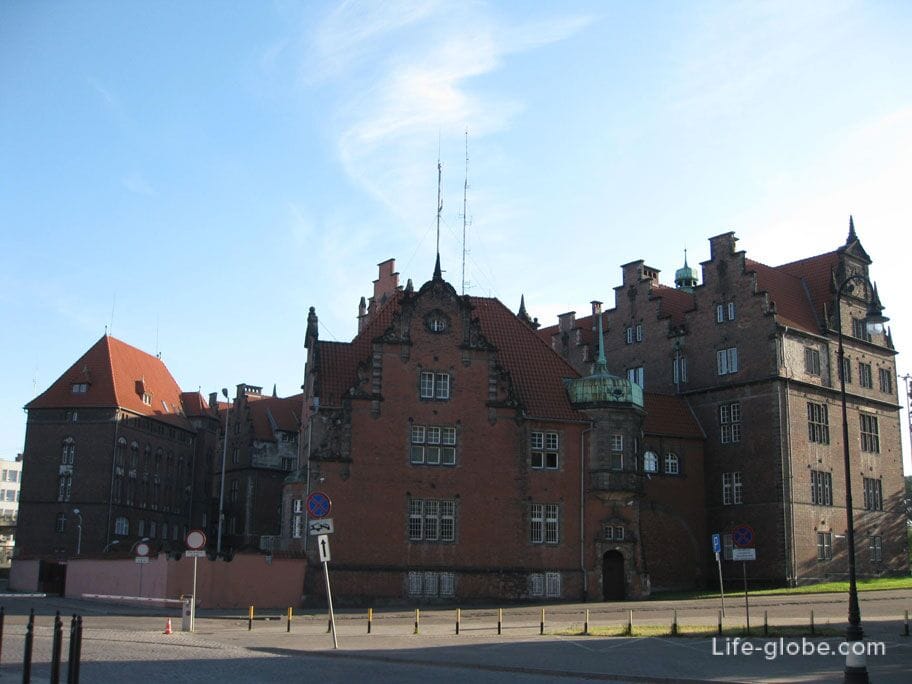
And sometimes, there are unremarkable alleys


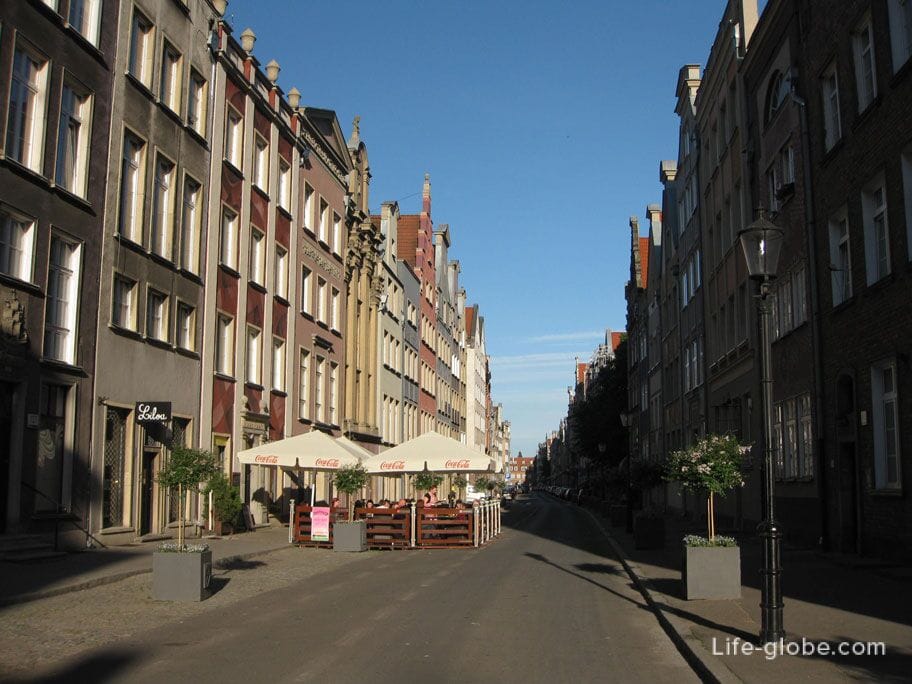
Our walk through the old town came to an end. To be honest one day in the old town for us was not enough, and we walked around the old town for three days, each time discovering and finding something new and unusual.
Will be in Gdansk or maybe somewhere in the vicinity of the city, visit old town, you will not remain indifferent.